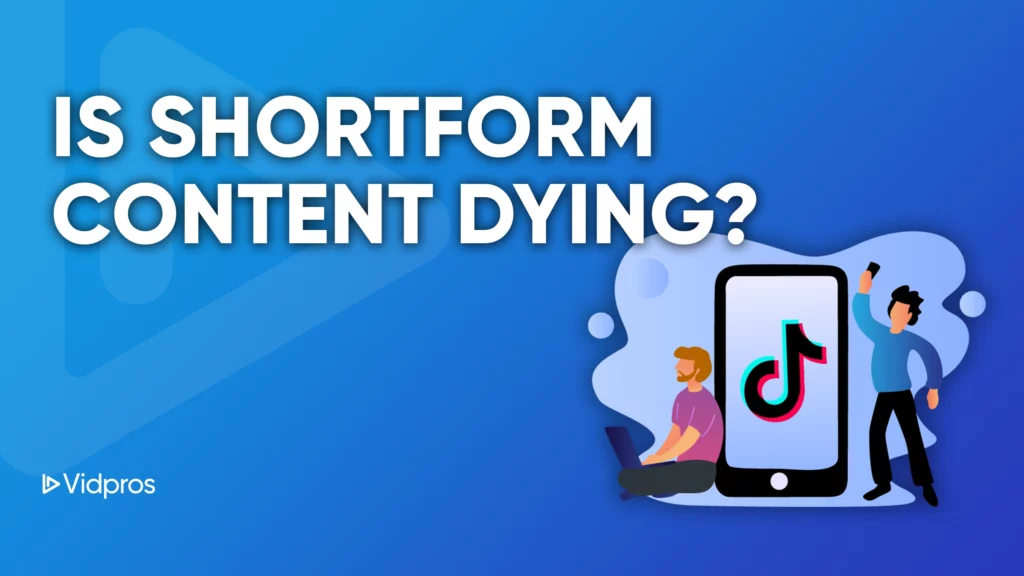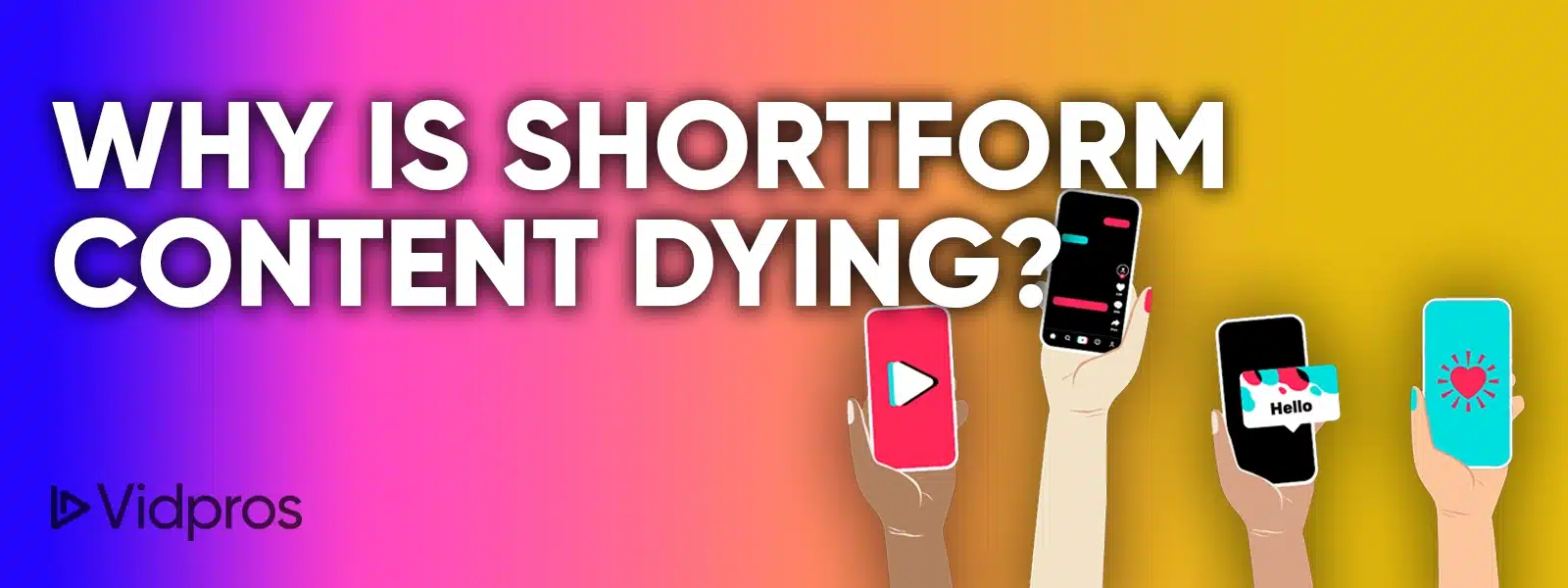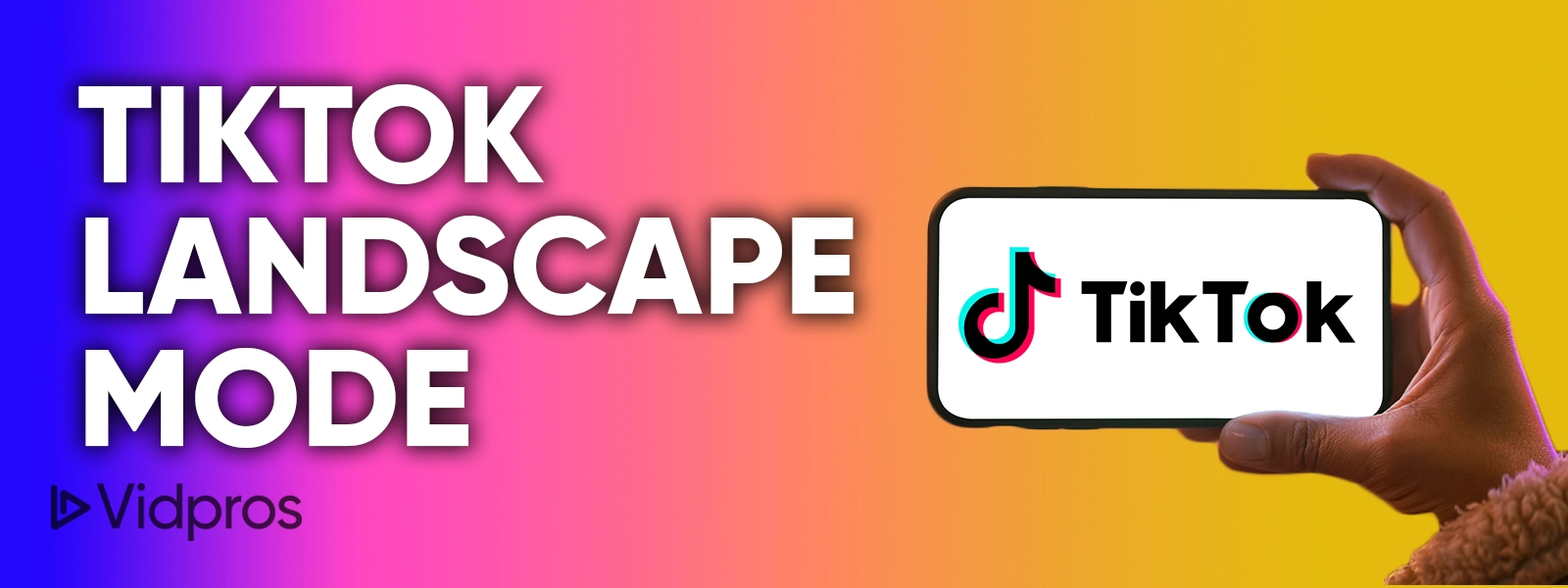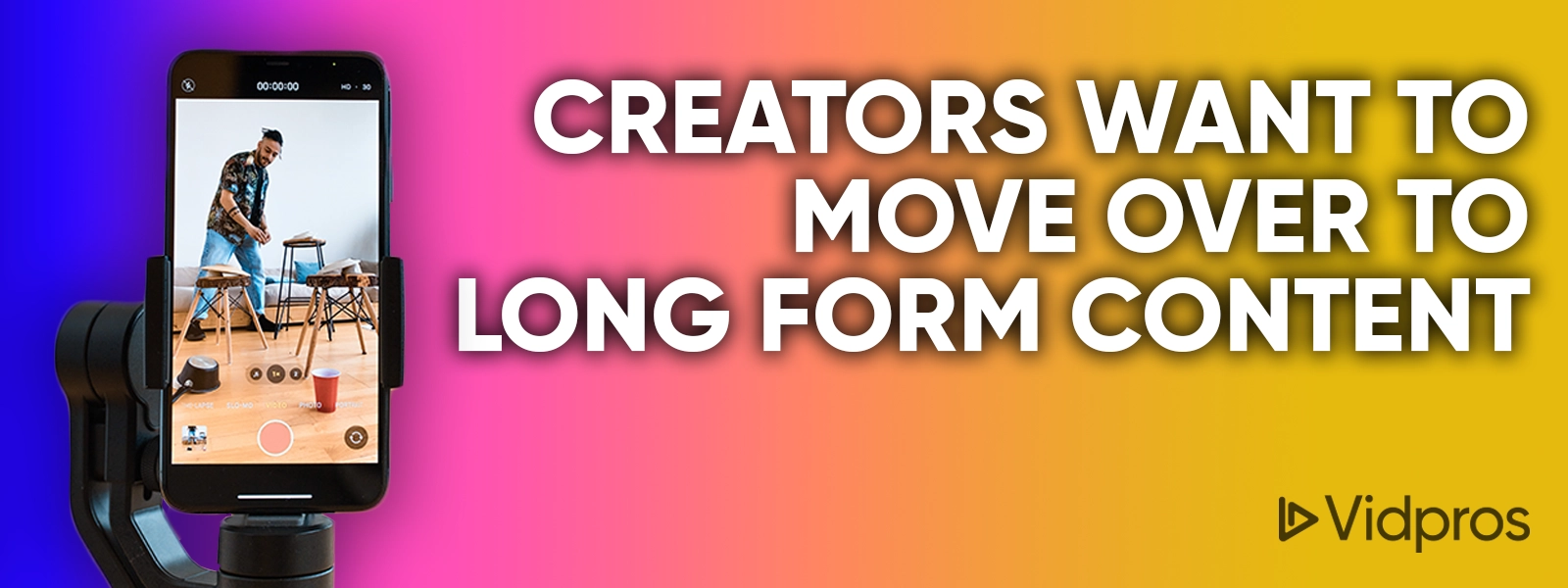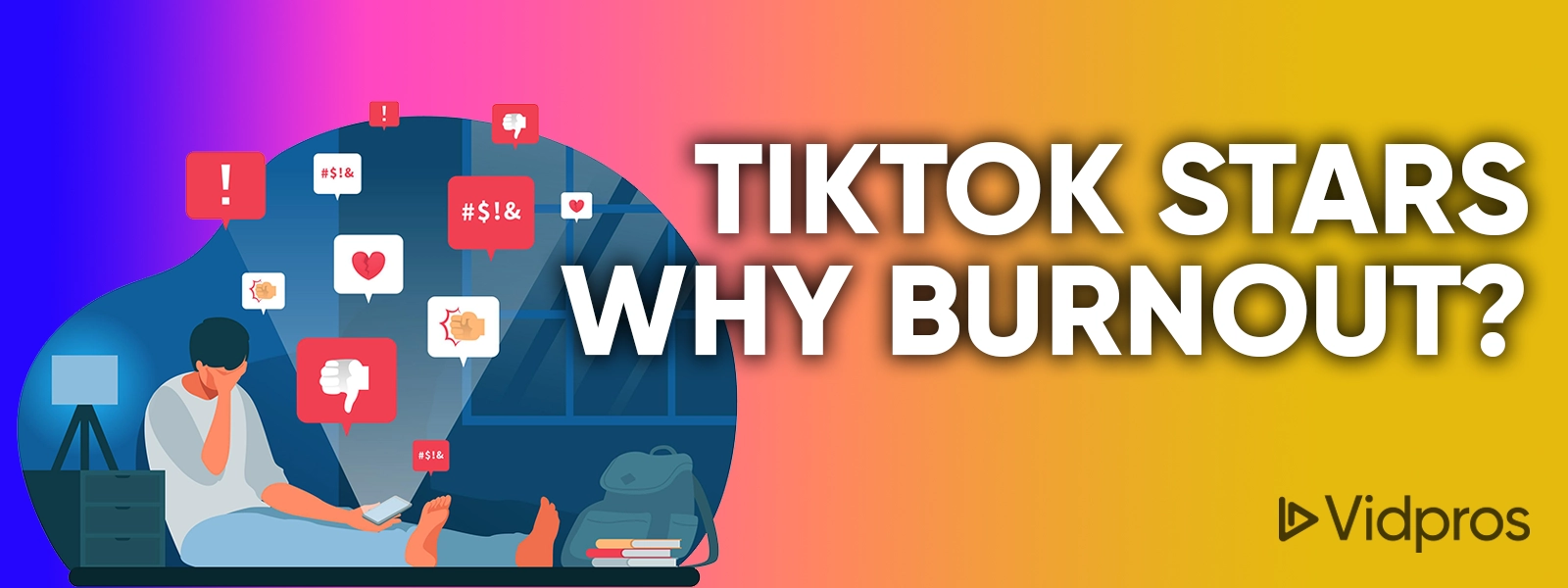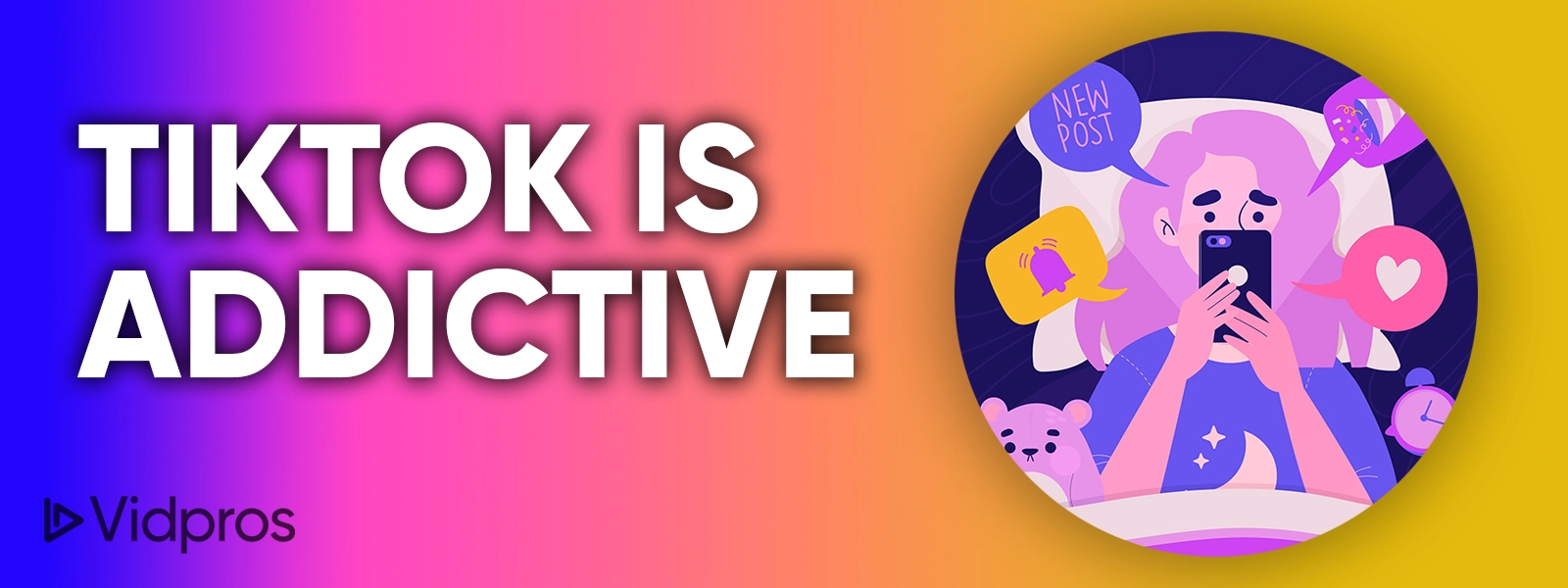It looks like companies are giving up on shortform content. Meta recently announced that they will stop giving bonuses to creators of this type of content. Why? Well, it turns out that pushing out this type of stuff, also known as micro-content actually loses Meta money. So if money is what drives advertising on the big platforms, does this mean that short-form content is dying?
Here’s the thing. While Instagram reels have exploded in popularity, they’re not exactly stealing market share away from TikTok. Rather, it’s stealing market share away from themselves. Instead of scrolling through pictures or the newsfeed on Instagram, people are now scrolling through reels.
Why Is Shortform Content Dying?
This doesn’t sound like a big deal until you consider that reels are much less profitable than Instagram’s other products, namely stories, or just regular posts. In fact, according to Mark Zuckerberg himself, people switching to reels is costing the company $500 million per quarter. That’s $2 billion a year-even for Facebook, that’s serious bucks…
The most ironic part is that this entire time, Meta had been paying creators to make reels. So really, they were paying to lose revenue. No wonder they stopped. But it’s not just Meta pivoting away from short-form content, either.
TikTok themselves are very much trying to move away. In fact, they’ve been aggressively increasing their max video length. What started at 15 seconds as the video length limit, grew to 60 seconds, to 3 minutes, to now 10 minutes. Yes, TikTok does allow a ten-minute video, you just can’t record it inside the app.
TikTok Tries Landscape Mode For The First Time
TikTok has even tried experimenting with landscape mode on Android. So it is very much headed towards the direction of Youtube, but a TikTok version where people don’t search and the algorithm is still king. An interesting point is that, for many people, once your subscribers and likes are all fired in, you don’t tend to search much anyway, unless you are clearly researching something specific outside of your regular channels.
Most of the time, you just use the homepage to find videos. But what happened? Why are all these companies pivoting away from shorts? Wasn’t micro content the new medium due to shorter and shorter attention spans and the need for constant stimulation?
Well, it turns out that the answer is no. While shortform content is great at getting attention short term, it’s not exactly the best model for companies or audiences long term. Instagram and Youtube are starting to realize that they invested way too much money on a low ROI fad, and TikTok is fighting hard to not become the next victim.
Why Companies Got It Wrong With ShortForm
So here’s why companies got this content game all wrong and why they’re already backing off. All successful creator-driven platforms need a strong base of creators. This is why platforms like YouTube and Spotify have even turned to offer exclusivity deals like it’s NFL football or something.
So it would be quite an issue if these platforms were struggling to grow a creator base. And that’s very much now the case with shortform content. This isn’t to say that TikTok and reels aren’t able to garner a bunch of creators, because there is no shortage of that.
Shortform Suffers From A Lack Of Loyalty
But what there is a shortage of is loyalty from these creators. People are trying it, but they aren’t sticking around. So what’s the point here? Nine times out of ten, people don’t start posting shorts because that’s what they truly want to do. Rather, creators start posting short videos because they see an opportunity.
They see a gold rush. Most creators never find gold, but even those who do, aren’t interested in reinvesting the profits into mining for more. It’s simply too risky. Rather, what they want to do is move on, take their winnings, and start a stable business. So what does “stable business” mean to this demographic?
Creators Want To Move Over To Long Form Content
They want to switch over to long-form content. Much of this attitude can actually be explained by the algorithms used to promote shorter content -your follower count on the shorter content really means nothing.
This is why it’s such a gold rush. If you start posting today, you have as good of a chance of posting a viral video as someone with 10 million followers. Actually, that isn’t entirely true. If a creator has that many followers, they’re probably pretty good at making viral content.
But the point is that the pivotal factor is the content itself, not the follower count. While this is great for new creators, it’s garbage when it comes to longevity. Creators are forced to always keep up with the latest trends and to put up something that can go viral instead of creating content that’s actually impactful and meaningful.
TikTok Stars Frequently Rise And Quit. Why Burnout?
This is why you see so many TikTok stars that rise out of nowhere and then disappear faster than they blew up. The truth is this covers basically 90% of short-form creators. The other 10% are actually already long-form creators who are just repurposing content (and we know that because we edit it into micro content for them!). The majority of creators we edit for have figured that they might as well try adapting their regular long-form content to shorts.
The mentality is usually if it works, great. If it doesn’t, not a big deal. No creator on TikTok, Instagram reels, or Youtube shorts is really loyal to any of these platforms. For all of them, short-form content is really just a springboard to garner attention or a medium to expand and promote their existing long-form content. Big names like Joe Rogan have been doing this for years on Youtube by adding “clips” channels with shorts to get more views and promote highlights in order to coax more viewers to watch a full interview.
So when you’re trying to run a creator-driven platform with such people well, let’s just say it’s difficult, to say the least. But building up a loyal creator base is just the first of these platforms’ worries.
Not only do these platforms have to deal with flaky creators, but they also have to deal with flaky advertisers. The reality is that no advertiser really wants to advertise on short-form content.
This isn’t to say that short-form advertising is always ineffective, but with that being said, shorts just don’t vibe with most brands.
I mean, can you imagine GE making a TikTok advert about refrigerators? Not exactly inspiring, entertaining or anything except boring. What about Intel making a TikTok ad about their new processor? It just doesn’t feel right. Now, some of the more traditional companies can still pull it off.
A solid example is Coca-Cola. But just because they’re able to make effective ads doesn’t mean that they want to advertise on these platforms. The truth is, in most cases, these companies just don’t want to associate with shorter forms of content because they see it as a risk.
You may or may not be familiar, but most companies don’t want to associate with the micro content on youtube. Well, micro content is basically the entirety of TikTok, but let’s even put that aside for one second. Let’s say you’re okay with advertising next to this type of content.
You still have the challenge of running a successful ad campaign. TikTok can be great for promoting products like this, but it’s not exactly great when it comes to building general brand awareness and visibility.
Ads Don’t Work If You’re Only Around for Two Seconds
Oftentimes, when companies like Apple or Coca-Cola put out an ad, they’re not trying to get you to buy their product. They don’t even want you to click on the ad or buy on the spot. Rather, they just want to build up their brand presence.
This is decently possible on Youtube, given that viewers are forced to watch for five or 15 seconds. But on TikTok, if an ad doesn’t pique the viewer’s interest within 2 seconds, they’re going to swipe up.
This means that advertisers are forced to include some sort of a gimmicky hook, which, again, just doesn’t fit with their brand image. And if you don’t believe me, you can just look at the numbers.
For shorts, however, people generally get an ad rate on views. This basically indicates that advertisers are 100 times less likely to bid on short-form ad slots than long-form ad slots. It also gives a lot more context as to why creators want to switch to long form content so badly.
The reality is that if you want to make a living off of shortform content, you have to pull in an insane amount of views every single month to make just $5,000 per month. For example, you have to pull in 100 million views.
Let me phrase that in a different way. You have to reach one 8th of the entire world population every single year just to make 60 grand. At least creators have the option to do direct brand deals or promote their own products.
Met Now Losing $2 Billion A Year
For these platforms. On the other hand, the only way they make money is through these ads. So even with their ridiculous scale, it’s still not profitable. So it’s no wonder why Meta is losing $2 billion year by pushing short form content.
While unloyal creators and hesitant advertisers are no doubt a pain in the neck, at least there is some hope. As more modern companies start advertising on short form platforms, ad rates should go up, which should make creating short form more worthwhile for platforms and creators.
But something that these platforms can’t recover from is a waning audience. The truth is that people are getting tired of predictable microcontent. And the main reason for this is that these types of videos rarely have any substance. You don’t come away with anything, unlike a 20 minute podcast, an in-depth interview from an expert, or even an audiobook.
Every single Youtube short, TikTok video or piece of video microcontent is based around a thirst trap or some sort of gimmick – so rarely do they have any sort of real takeaway,message, or sustainable value. This is why people forget about most shorts within two minutes of watching it.
It feels good at the moment, but the feeling doesn’t last long. But wait a minute, aren’t people’s attention spans getting crushed by these platforms? Well, to be honest, I think this effect is currently significantly overstated.
We All Know TikTok Is Addictive And Unhealthy, Right?
Think of TikTok like ice cream. People like eating ice cream. They may even eat it on a daily basis. But just because a person eats ice cream doesn’t mean that they’re suddenly going to stop eating real food in general.
In fact, if you had the option of only consuming ice cream or regular meals, I’m pretty sure that virtually everyone will choose regular meals. Looking back, the pandemic forced most people to stay at home, which led to them “snacking on TikTok” way more than usual.
Social Media Diet Is Changing
But as people return to their normal lives, their social media diet is also returning to real food. And this is already evident in the stats. In 2021, TikTok rose to be the most popular domain in the entire world. On February 17, it got the top spot for a day.
But in 2022, TikTok fell down to number three as Google and Facebook regained their leads. And looking forward, it seems like this trend will only continue as TikTok is looking more and more like wine.
The Death Of Vine As An Industry Example
Most of you who know Vine, just remember it as a big failure, but Vine was super popular for a period of time. In fact, at the end of 2015, the vine had as many as 200 million users. Why did Vine fail then?
Well, you can take it from the horse’s mouth itself. Twitter, the parent company of Vine, was unable and or unwilling to pay the creators that made the platform so popular in the first place. This was actually the biggest regret of super CEO Jack Dorsey at the time.
But what is Tiktok doing? Well, they’re unable and or unwilling to pay the creators that made their platform so big. And as audiences and creators naturally shift back to Facebook and Youtube, these platforms see less of a reason to be so aggressive when it comes to promoting shorts.
Is It A Surprise That Companies Are Backing Away?
In the end, it’s not surprising why companies are backing away from short-form content. The reality is that creators are just using shorts as springboard advertisers for longer-form content.
The interesting fact is that audiences are by no means ditching long-form content. This isn’t to say that TikTok is going to die like Vine, but what has become abundantly clear is that short-form content is simply an addition to long-form content, not a replacement like the media often suggests.
Is Shortform Content Really Dying? Maybe I Still Need It?
So Meta and Youtube no longer feel threatened by Tiktok. If anything, it’s actually Tiktok that strives to be more like Meta and Youtube so that they don’t end up like Vine. Combine this with the recession and it simply makes no sense to bet so much on what I historically flaky medium.
And that’s why companies are already giving up and pulling back on short-form content. Do you feel like short-form content is dying?

